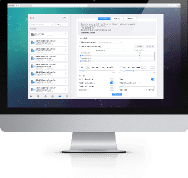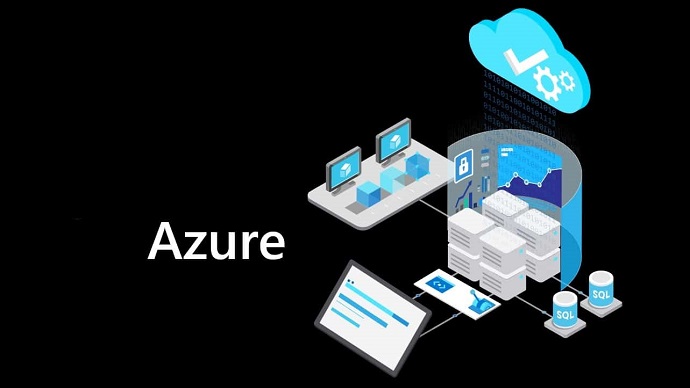Use VCE Exam Simulator to open VCE files

SC-400 Microsoft Practice Test Questions and Exam Dumps
Question No 1:
You create three sensitivity labels named Sensitivity1, Sensitivity2, and Sensitivity3 and perform the following actions:
✑ Publish Sensitivity1.
✑ Create an auto-labeling policy for Sensitivity2.
You plan to create a file policy named Policy1 in Microsoft Cloud App Security.
Which sensitivity labels can you apply to Microsoft SharePoint Online in Policy1?
A. Sensitivity1 only
B. Sensitivity1, Sensitivity2, and Sensitivity3
C. Sensitivity2 only
D. Sensitivity1 and Sensitivity2 only
Answer: D
Explanation:
When configuring Microsoft Cloud App Security (MCAS) policies, sensitivity labels play a crucial role in defining and protecting data. However, there are certain requirements and conditions that determine which sensitivity labels can be applied to services like Microsoft SharePoint Online.
Here’s a breakdown of the actions and conditions provided:
Publish Sensitivity1:
This action makes Sensitivity1 available for use in the system. It is now a label that can be applied in various policies.
Create an auto-labeling policy for Sensitivity2:
An auto-labeling policy applies a sensitivity label automatically based on certain conditions, such as content classification or information types. While Sensitivity2 is being auto-labeled, it is not manually published yet, meaning it can be applied to content through auto-labeling policies but may not be directly available for use in the MCAS policy as a manual selection.
Sensitivity3:
There is no indication that Sensitivity3 has been published or has an auto-labeling policy associated with it, making it unavailable for use in Policy1.
Now, let’s review the options:
Option A – Sensitivity1 only:
This is partially correct, as Sensitivity1 has been published and is available for use. However, Sensitivity2 is also eligible for use in the policy through auto-labeling, so A is not the complete answer.
Option B – Sensitivity1, Sensitivity2, and Sensitivity3:
This option includes Sensitivity3, but there is no indication that Sensitivity3 is available for use. Sensitivity3 has not been published, and there is no auto-labeling policy for it, making this option incorrect.
Option C – Sensitivity2 only:
Although Sensitivity2 is part of an auto-labeling policy, it is not fully available for direct application in the MCAS policy, because auto-labeling automatically assigns the label based on predefined conditions. Hence, C is not correct.
Option D – Sensitivity1 and Sensitivity2 only:
This is the correct answer. Sensitivity1 is published and available for manual application. Sensitivity2, while it is part of an auto-labeling policy, can still be used in MCAS policies if auto-labeling conditions are met. Since Sensitivity3 is not published or auto-labeled, it cannot be used in Policy1. Therefore, D is the correct answer.
In conclusion, the sensitivity labels that can be applied to Microsoft SharePoint Online in Policy1 are Sensitivity1 and Sensitivity2, making D the correct answer.
Question No 2:
You have a Microsoft OneDrive for Business folder that contains the files shown in the following table. In Microsoft Cloud App Security, you create a file policy to automatically apply a classification. What is the effect of applying the policy?
A The policy will apply to only the .docx and .txt files. The policy will classify the files within 24 hours.
B The policy will apply to all the files. The policy will classify only 100 files daily.
C The policy will apply to only the .docx files. The policy will classify only 100 files daily.
D The policy will apply to only the .docx and .txt files. The policy will classify the files immediately.
Correct Answer: B
Explanation:
In Microsoft Cloud App Security (MCAS), file policies can be configured to automatically apply classifications to files based on specific rules, including file types and other parameters. When applying such a policy, it is essential to understand how Microsoft Cloud App Security processes the files and how it applies classifications.
Let’s analyze the options based on what typically happens when a file policy is applied:
A The policy will apply to only the .docx and .txt files. The policy will classify the files within 24 hours: While the file types may be relevant (for example, only .docx and .txt), this option is incorrect because the classification typically doesn't take 24 hours. The application of classification usually happens more promptly, and the 24-hour delay isn't a standard behavior unless explicitly specified. Therefore, A is incorrect.
B The policy will apply to all the files. The policy will classify only 100 files daily: This is the correct option. In Microsoft Cloud App Security, when you apply a file policy, it may apply to all the files in the specified folder or location, not limited to certain file types like .docx or .txt. However, there is often a limitation where only 100 files can be classified daily. This means that the system processes files in batches, and it classifies a maximum of 100 files per day. Hence, B is the correct answer.
C The policy will apply to only the .docx files. The policy will classify only 100 files daily: This option incorrectly limits the policy to only .docx files. Typically, unless explicitly defined, the policy applies to all files within the scope of the policy, not just one file type. Therefore, C is incorrect.
D The policy will apply to only the .docx and .txt files. The policy will classify the files immediately: This option is incorrect because, while the policy might apply to .docx and .txt files, the classification process is not immediate. There is usually a delay in applying classifications, even though it does not necessarily take as long as 24 hours. Therefore, D is not correct.
In conclusion, B is the correct answer because it accurately reflects the behavior of Microsoft Cloud App Security file policies—applying to all files with a classification rate of up to 100 files per day. This limitation ensures that file classifications are applied in a controlled manner to avoid overloading the system.
Question No 3:
You are implementing a data classification solution. The research department at your company requires that documents containing programming code be labeled as Confidential. The department provides samples of the code from its document library.
The solution must minimize administrative effort. What should you do?
A. Create a custom classifier.
B. Create a sensitive info type that uses Exact Data Match (EDM).
C. Use the source code classifier.
D. Create a sensitive info type that uses a regular expression.
Answer: C
Explanation:
In this scenario, the primary goal is to classify documents containing programming code as Confidential with minimal administrative effort. The research department has already provided samples of code, and a solution is required to automatically classify documents based on their content.
Let’s review each option:
A. Create a custom classifier: A custom classifier could indeed be used to categorize documents, but it would likely involve substantial administrative effort. A custom classifier requires defining specific patterns, conditions, or characteristics of the documents to be classified. While customizable, this approach might require significant manual configuration, which goes against the requirement to minimize administrative effort.
B. Create a sensitive info type that uses Exact Data Match (EDM): Exact Data Match (EDM) is useful for identifying known sensitive information based on exact matches, such as personal information or financial data. EDM works well when you have specific known values (like a credit card number or a social security number) to match against, but it is not ideal for identifying programming code. Programming code samples may vary widely in syntax and structure, making EDM less effective for this scenario.
C. Use the source code classifier: The source code classifier is designed specifically for identifying programming code in documents. It works by detecting patterns and structures typical of source code (such as syntax, keywords, and code structures). This solution minimizes administrative effort because it is built to detect programming code automatically, which aligns perfectly with the requirements of this scenario. It requires much less manual configuration compared to custom classifiers or EDM and is a targeted solution for the problem at hand.
D. Create a sensitive info type that uses a regular expression: While regular expressions can be powerful for detecting patterns in text, using them to identify programming code in a consistent way might require considerable effort to write and maintain. Programming code can vary significantly in structure, and creating a regular expression to capture all possible variations in code could be complex and time-consuming. This approach would require more administrative effort than the source code classifier, making it less ideal for the current scenario.
Therefore, the best option is C, using the source code classifier. This solution is specifically designed to detect programming code in documents, and it requires minimal administrative effort to implement.
Question No 4:
You have a new Microsoft 365 tenant. You need to ensure that custom trainable classifiers can be created in the tenant. To which role should you be assigned to perform the configuration?
A Security administrator
B Security operator
C Global administrator
D Compliance administrator
Correct answer: D
Explanation:
Microsoft 365 provides several roles for managing security and compliance features within an organization. When it comes to creating custom trainable classifiers, which are used for automatic content classification and labeling (e.g., for compliance purposes), it is essential to assign the right role for the task.
Let's break down the role requirements for this task:
A Security administrator: This role primarily focuses on managing security-related tasks in Microsoft 365, including the management of security features like threat protection, security policies, and alerts. However, creating custom trainable classifiers falls under compliance management, not security administration, so this role would not be sufficient for the task.
B Security operator: Security operators can view security-related alerts and reports, but they do not have the permissions necessary to configure or create compliance features such as trainable classifiers. This role is more limited and not suited for configuring classifiers.
C Global administrator: The Global administrator role has full permissions across the Microsoft 365 tenant, including the ability to manage all aspects of the system. While this role can certainly configure custom trainable classifiers, it has far broader privileges than needed for this specific task. It’s an over-privileged option when compared to other roles like Compliance administrator.
D Compliance administrator: This is the correct role for creating and managing compliance-related features in Microsoft 365, such as custom trainable classifiers. The Compliance administrator role provides permissions to manage data governance, compliance policies, and activities like setting up custom classifiers for content analysis and retention. This is the most appropriate role for the task at hand.
Therefore, to configure custom trainable classifiers, you should be assigned the Compliance administrator role (option D).
Question No 5:
You need to automatically apply a sensitivity label to documents that contain information about your company's network, including computer names, IP addresses, and configuration information.
Which two objects should you use? Each correct answer presents part of the solution. (Choose two.)
A an Information protection auto-labeling policy
B a custom trainable classifier
C a sensitive info type that uses a regular expression
D a data loss prevention (DLP) policy
E a sensitive info type that uses keywords
F a sensitivity label that has auto-labeling
Correct Answers: A, F
Explanation:
In order to automatically apply a sensitivity label to documents containing specific information, such as computer names, IP addresses, and configuration data, a combination of auto-labeling policies and sensitivity labels with auto-labeling must be used. Here’s why A and F are the best choices:
An auto-labeling policy is part of the Microsoft Information Protection (MIP) system, which automatically applies labels to documents based on the content. By defining specific conditions in the policy (e.g., IP addresses, computer names, configuration details), you can ensure that the correct sensitivity label is automatically applied whenever documents containing these types of information are detected. This is the core tool for automating the process of labeling documents in your scenario.
A sensitivity label can be configured to apply automatically when certain criteria are met. For this scenario, you would create a sensitivity label with auto-labeling enabled, meaning it will automatically be applied when documents meet the conditions defined in the auto-labeling policy (for instance, containing certain network details like IP addresses or computer names). This label can enforce security policies, such as encryption or restricted access, based on the sensitivity of the document.
Now let’s consider why the other options are less suitable:
B. Custom trainable classifier:
A trainable classifier can be useful for identifying custom types of information based on machine learning. While this could help identify network-related data, it is more complex and might require significant training data. For a more straightforward scenario like identifying IP addresses or configuration data, an auto-labeling policy and predefined sensitive info types are more efficient and easier to implement.
C. Sensitive info type that uses a regular expression:
This could work for detecting specific patterns like IP addresses. However, it's more of a detection method than an automated labeling tool. A sensitive info type can indeed be used to identify specific patterns, but you would still need to use it in conjunction with an auto-labeling policy (which is covered in option A) to apply the label automatically.
D. Data loss prevention (DLP) policy:
DLP policies are designed to prevent the accidental or intentional sharing of sensitive information. While DLP can detect sensitive content, it does not apply sensitivity labels by itself. It’s more focused on data protection through prevention and alerts, rather than automatically applying labels.
E. Sensitive info type that uses keywords:
Similar to regular expressions, this can detect specific words or phrases. However, using keywords alone may be insufficient for capturing complex or technical data (such as IP addresses or configuration data) unless the exact keyword patterns are defined. Regular expressions or custom classifiers would be more reliable for this type of task.
To automatically apply sensitivity labels based on the presence of specific network-related information in documents, you need to combine an auto-labeling policy and a sensitivity label with auto-labeling. Therefore, the correct answers are A and F.
Question No 6:
Which of the following tools can be used to create sensitivity labels for information protection in Microsoft 365?
A) Microsoft Compliance Center
B) Microsoft Azure Security Center
C) Microsoft PowerShell
D) Microsoft Information Protection (MIP) Viewer
Answer: A) Microsoft Compliance Center
Explanation:
The Microsoft Compliance Center is the central hub in Microsoft 365 for managing compliance and security tasks, including the creation and management of sensitivity labels. Sensitivity labels are used to classify and protect data across Microsoft 365 services. Using the Compliance Center, administrators can create sensitivity labels, configure protection actions such as encryption, and deploy them across their organization. Azure Security Center, PowerShell, and MIP Viewer are tools that assist in security, automation, and viewing data but are not directly used for sensitivity label creation.
Question No 7:
What is the purpose of Data Loss Prevention (DLP) policies in Microsoft 365?
A) To encrypt sensitive emails
B) To prevent the sharing of sensitive data
C) To classify data for compliance purposes
D) To archive deleted data
Answer: B) To prevent the sharing of sensitive data
Explanation:
Data Loss Prevention (DLP) policies in Microsoft 365 are designed to detect and prevent the accidental or intentional sharing of sensitive information. These policies help ensure that sensitive data such as credit card numbers, Social Security numbers, or other confidential information does not leave the organization inappropriately. DLP policies can be configured to notify users or block the sharing of such information, helping mitigate data breaches. Encryption and classification are different concepts, though DLP can work alongside them to enhance data protection.
Question No 8:
Which of the following is NOT a feature of Microsoft Information Protection (MIP)?
A) Sensitivity labels
B) Encryption
C) Data retention policies
D) Identity and access management
Answer: D) Identity and access management
Explanation:
Microsoft Information Protection (MIP) focuses primarily on classifying, labeling, and protecting sensitive data across Microsoft 365 services. Features such as sensitivity labels, encryption, and data retention policies are part of MIP's offerings. However, identity and access management is typically handled by Azure Active Directory (Azure AD), which is a separate service from MIP. Azure AD controls user authentication, identity protection, and access management, but it is not part of MIP's functionality.
Question No 9:
Which of the following is used to configure retention labels for content in Microsoft 365?
A) Microsoft 365 Compliance Center
B) Microsoft Power BI
C) Microsoft SharePoint Admin Center
D) Microsoft Teams Admin Center
Answer: A) Microsoft 365 Compliance Center
Explanation:
Retention labels are part of the information governance capabilities in Microsoft 365, and they are configured through the Microsoft 365 Compliance Center. Retention labels help organizations manage the lifecycle of content by ensuring that data is kept for the appropriate duration and then deleted or archived as per organizational or legal requirements. This is part of the broader effort to adhere to data governance and compliance standards. Microsoft Power BI, SharePoint Admin Center, and Teams Admin Center serve different roles related to data analytics, collaboration, and service management.
Question No 10:
Which of the following types of data are typically protected using Microsoft Information Protection policies?
A) Network configurations
B) Sensitive financial data
C) Application source code
D) End-user device configurations
Answer: B) Sensitive financial data
Explanation:
Microsoft Information Protection policies are designed to protect sensitive organizational data, such as financial records, personally identifiable information (PII), and other confidential business data. These policies include features like encryption, access controls, and labeling to prevent unauthorized access and ensure data privacy and compliance with regulations like GDPR. Network configurations, application source code, and end-user device configurations are typically managed through different tools and systems, such as network security solutions or device management platforms, rather than through MIP.
Sensitivity Labels and Data Classification: Sensitivity labels help classify and protect sensitive information across Microsoft 365 services. Labels can be configured to apply different protection actions, such as encryption or marking data as confidential.
Data Loss Prevention (DLP): DLP policies are crucial for protecting sensitive data from being inadvertently shared outside the organization. These policies help reduce the risk of data breaches and compliance violations.
Retention Labels and Information Governance: Retention labels help manage how long content is kept and when it should be deleted, helping organizations comply with retention policies and data regulations.
Microsoft Compliance Center: This is the central platform where organizations can configure, deploy, and manage compliance and information protection policies, including sensitivity and retention labels, DLP policies, and more.
MIP and Encryption: Microsoft Information Protection integrates encryption to safeguard sensitive content. It ensures that even if data is accessed by unauthorized users, it cannot be read without proper decryption keys.
By mastering these concepts and tools, candidates can ensure that they understand the critical aspects of data protection and governance within the Microsoft 365 ecosystem, making them well-prepared for the SC-400 exam.
Related Exams

Top Training Courses











SPECIAL OFFER: GET 10% OFF
This is ONE TIME OFFER

A confirmation link will be sent to this email address to verify your login. *We value your privacy. We will not rent or sell your email address.
Download Free Demo of VCE Exam Simulator
Experience Avanset VCE Exam Simulator for yourself.
Simply submit your e-mail address below to get started with our interactive software demo of your free trial.